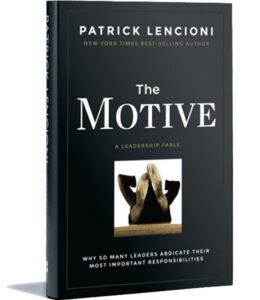“The Motive: A Leadership Fable” by Patrick Lencioni
The Motive is Pat Lencioni’s latest leadership fable, and we at StarQuest highly recommend this book for your library. Lencioni is a best-selling author who has written a dozen books that focus on how leaders can build teams and create healthier organizations. His latest will not disappoint!
The Motive is a fairly quick read with an engaging story line. The message is powerful and should be a must-read for leaders wanting to increase their effectiveness.
“Scaling Leadership” by Robert J. Anderson and William A. Adams
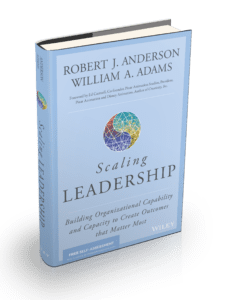 Scaling Leadership is a great read for those in positions of senior leadership who need to transform their organizations and organizational leaders. Scaling Leadership is an essential guide that offers senior leaders the information needed to develop conscious leadership at scale within their organization.
Scaling Leadership is a great read for those in positions of senior leadership who need to transform their organizations and organizational leaders. Scaling Leadership is an essential guide that offers senior leaders the information needed to develop conscious leadership at scale within their organization.
In addition to this bestseller, Bob and Bill published another bestselling book entitled Mastering Leadership. We recommend you read Mastering Leadership first, and follow-up with Leadership at Scale.
We highly recommend this book, and have included this in our leadership development programs.
“Leadership at Scale” by Bob Anderson and Bill Adams
Leadership at Scale is a great read for those in positions of senior leadership who need to transform their organizations and organizational leaders. Leadership at Scale is an essential guide that offers senior leaders the information needed to develop conscious leadership at scale within their organization.
In addition to this bestseller, Bob and Bill published another bestselling book entitled Mastering Leadership. We recommend you read Mastering Leadership first, and follow-up with Leadership at Scale.
We highly recommend this book, and have included this in our leadership development programs.
“The Coaching Habit” by Michael Bungay Stanier
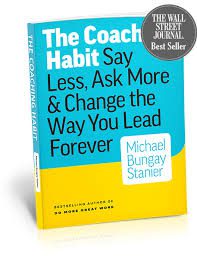
The Coaching Habit by Michael Bungay Stanier is a great book for leaders, managers, and team leaders. It reads quickly, and there are plenty of practice tips and techniques. The book is used in our Coaching for Success workshops and is featured in our Leadership Journey programs. If you had to purchase one book on coaching, we would recommend this be the one.
“Everybody Matters” by Bob Chapman and Raj Sisodia
Wh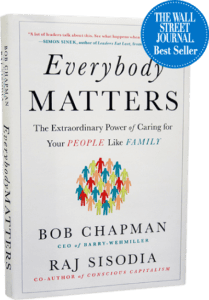 en it comes to maximizing potential, Bob Chapman and his team at Barry-Wehmiller have mastered this leadership practice.This is the story of how the Barry-Wehmiller company has experienced enormous transformative change with the manufacturing companies that theyacquired by simply applying leadership principles that buildcultures of trust, security,and fulfillment. And the best part of the story is the business results that have resulted from adoption of these core principles and leadership practices. There is a reason why this book is on the Wall Street Journal Bestseller list. Check it out!
en it comes to maximizing potential, Bob Chapman and his team at Barry-Wehmiller have mastered this leadership practice.This is the story of how the Barry-Wehmiller company has experienced enormous transformative change with the manufacturing companies that theyacquired by simply applying leadership principles that buildcultures of trust, security,and fulfillment. And the best part of the story is the business results that have resulted from adoption of these core principles and leadership practices. There is a reason why this book is on the Wall Street Journal Bestseller list. Check it out!
“Insight: The Surprising Truth About How Others See Us” by Tasha Eurich
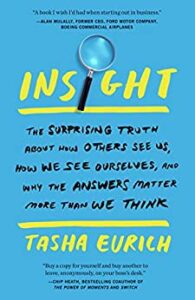
Tasha Eurich hits another home run bestseller with Insight: The Surprising Truth About How Others See Us, How We See Ourselves, and Why the Answers Matter More than We Think. One of the most striking discoveries in her research was that 95% of us think we’re self-aware, and yet her research indicates only 10-15% are actually truly self-aware. If being self-aware is a meta-skill of the 21st century, then as leaders we need to look at how we increase our self awareness in support of our leadership effectiveness. We think so highly of this book that we’ve integrated Insight into our leadership development programs.
“Smarter, Faster, Better” by Charles Duhigg
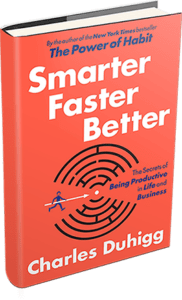 Duhigg’s earlier book, The Power of Habit, was so insightful and intriguing that I decided to pick up his latest best seller: Smarter, Faster, and Better. This is a great read with memorable stories and case studies that will help with the stickiness of his teaching. Great read!
Duhigg’s earlier book, The Power of Habit, was so insightful and intriguing that I decided to pick up his latest best seller: Smarter, Faster, and Better. This is a great read with memorable stories and case studies that will help with the stickiness of his teaching. Great read!
“Mastering Leadership” by Robert J. Anderson and William A. Adams
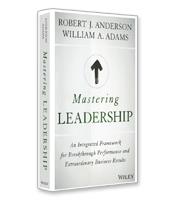 Mastering Leadership is one of the most comprehensive, and well-researched leadership books that I’ve read in years. Both Anderson and Adams do an amazing job of presenting their Universal Leadership Model, and then outlining leadership principles and practices that will increase a leaders’ effectiveness. I would highly recommend this book; however it’s not bedtime reading! It requires some focus thinking, highlighting, and notes in the margin.
Mastering Leadership is one of the most comprehensive, and well-researched leadership books that I’ve read in years. Both Anderson and Adams do an amazing job of presenting their Universal Leadership Model, and then outlining leadership principles and practices that will increase a leaders’ effectiveness. I would highly recommend this book; however it’s not bedtime reading! It requires some focus thinking, highlighting, and notes in the margin.
“Your Brain at Work” by David Rock
![9780061771293_p0_v1_s118x184[1]](https://starquestgroup.com/wp-content/uploads/2015/05/9780061771293_p0_v1_s118x1841.jpg) David Rock’s book had been recommended a couple of years ago, and so I had a chance to finally pull it off my bookshelf and delve into his work. David outlines some fascinating research, does an outstanding job of taking hard science and applying it to the workplace through great storytelling. If you’re interested in learning more about how the brain works, I’d recommend this book.
David Rock’s book had been recommended a couple of years ago, and so I had a chance to finally pull it off my bookshelf and delve into his work. David outlines some fascinating research, does an outstanding job of taking hard science and applying it to the workplace through great storytelling. If you’re interested in learning more about how the brain works, I’d recommend this book.
“Drive: The Surprising Trust About What Motivates Us” by Daniel Pink
![419tQKzU2jL._AC_US160_[1]](https://starquestgroup.com/wp-content/uploads/2013/10/419tQKzU2jL._AC_US160_1.jpg) This summer I had an opportunity to read a great book entitled, Drive: The Surprising Truth About What Motivates Us by Daniel Pink. Pink’s book explores and debunks several myths about what drives human behavior, and hebuilds a strong case for why we as leaders and managers need to better understand what motivates people and not just rely on economic motivators.
This summer I had an opportunity to read a great book entitled, Drive: The Surprising Truth About What Motivates Us by Daniel Pink. Pink’s book explores and debunks several myths about what drives human behavior, and hebuilds a strong case for why we as leaders and managers need to better understand what motivates people and not just rely on economic motivators.
For example one commonly held belief is that ifwe provide larger extrinsic incentives, then people will perform better. This belief turns out to be true for simple, mechanical tasks. However, itis not true when motivating people aroundcomplex tasks that demand more conceptual reasoning. His researchindicates thatperformance andoutcomes are largely driven byproviding people with autonomy, enabling them to be experts, and creating a sense of purpose. In other words, when thinking about motivating others we as leaders should ask ourselves 1)have we created an environment where people have autonomy; 2) are we enabling peopleto develop and master their skills; and 3)have we communicated a strong sense of purpose –or why we are doing what we’re doing.Pink’s findingsare simple, and powerful.


